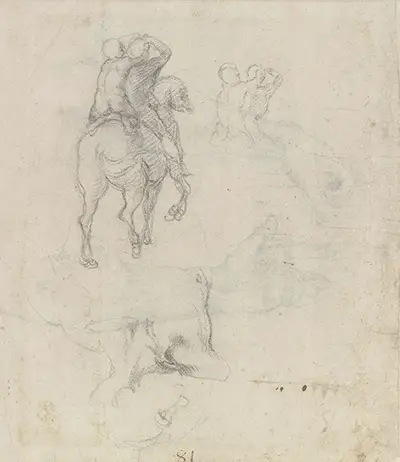The clearest sign that it is a study piece is in the fact that much remained unfinished. It could not be presented as a finished artwork, with the artist having moved on having been satisfied with the experiments that he had completed. There are some detailed drawings from this artist which were intended as gifts to others, but most are simply practice pieces of individual elements of a larger, later fresco.
The horse with two male riders which sits in the left hand side of the paper is the most detailed part of this drawing. The two figures are repeated again close by as Michelangelo experimented with their postures. There is then a light outline of a male torso lower down which was rough and incomplete. The artist would frequently use spare pieces of paper to put different sketch work together, sometimes completely unrelated to each other.
This anatomical study measures approximately 20cm wide and tall and is dated at circa 1508-1509. Black chalk was used on paper in this particular sketch, though his career included many other tools such as red chalk, ink and charcoal. This was an artist who took experimentation and ambition to the extreme, never satisified to simply match the ideas of others or feel limited in anyway.
The male torso is upside down, with the artist rotating the paper in order to fit this in at the bottom. It is unknown as to what this was planned for, but the more significant sketch of two horsemen is likely to have been a study for some of his work in the Sistine Chapel. There is also a connection between some of the content of this drawing and the right hand side of the fresco, The Drunkenness of Noah. That also sits in the Sistine Chapel and is a constant reminder of the beauty of this artist's work.


